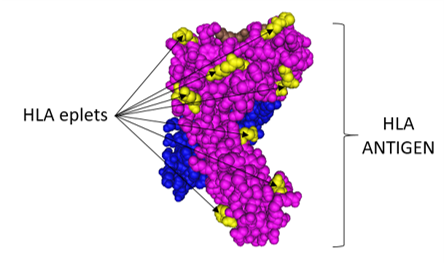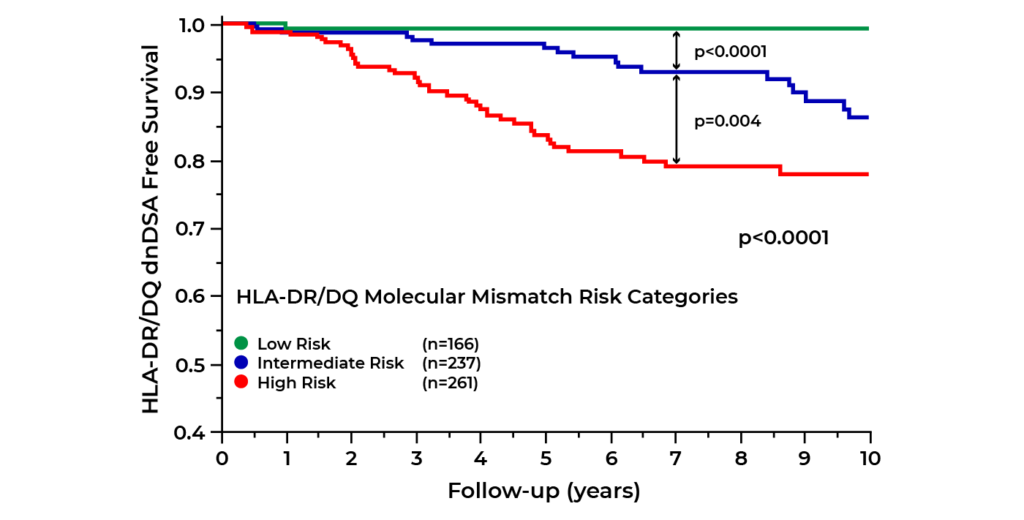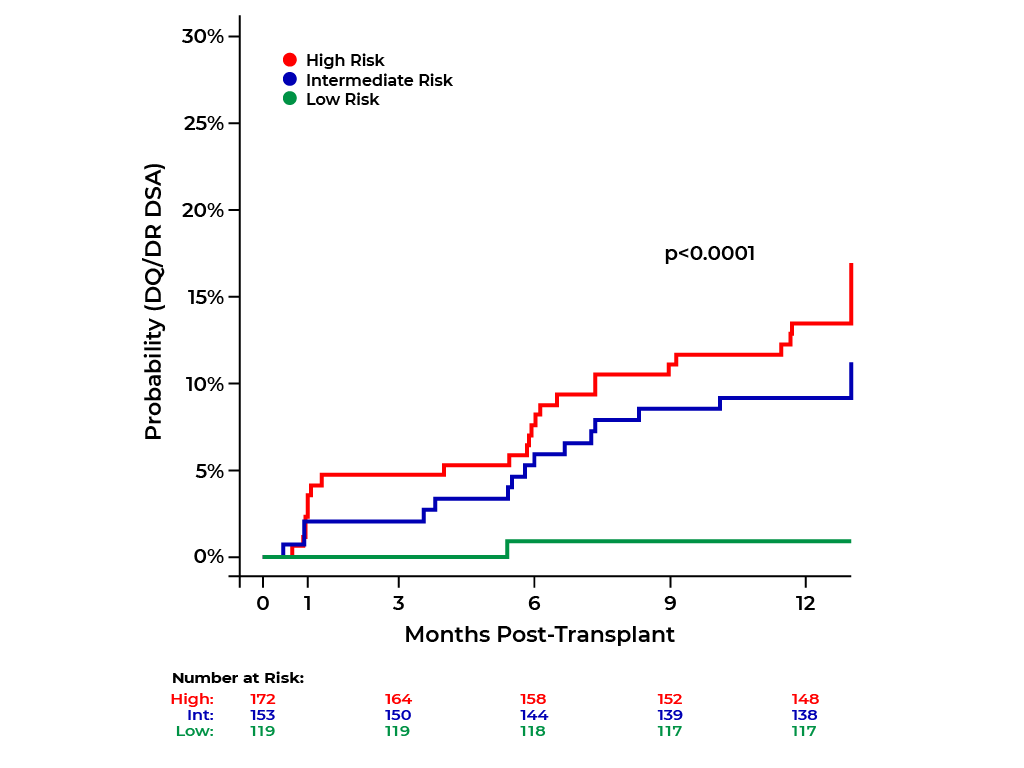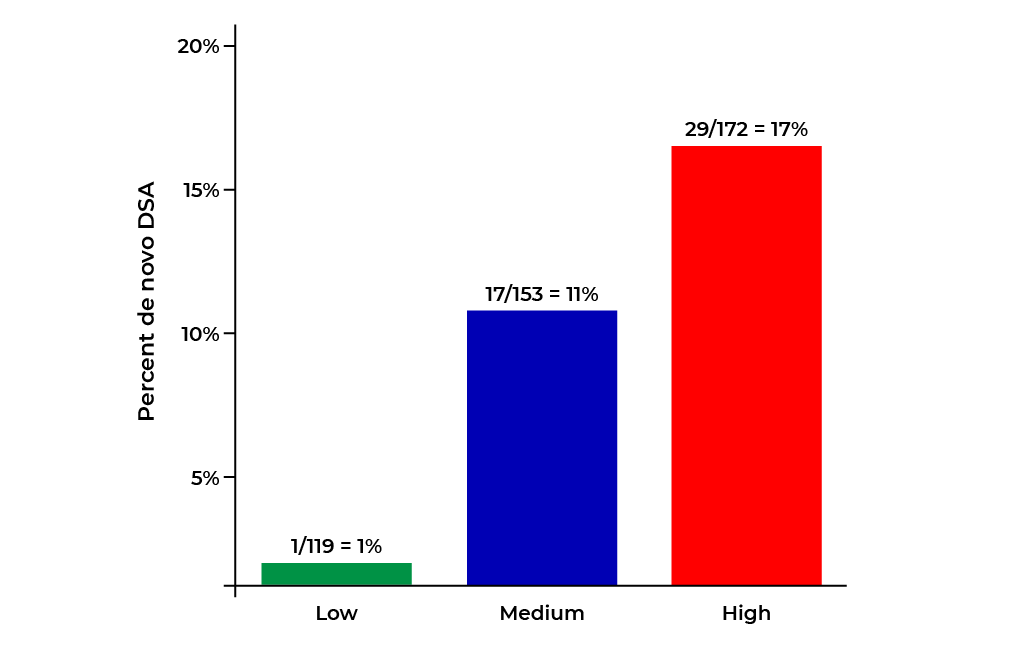About Eplet Matching
The Kidney for Life Initiative (KFL) utilizes the latest advances in DNA sequencing technology to assess the histologic match between patients and potential donors. The aim of the KFL initiative is to upgrade patients to low eplet mismatch transplants and therefore:
- Reduce the probability of de novo DSA formation
- Reduce the probability of chronic rejection
- Reduce the probability of graft failure
- Increase graft longevity so the transplant lasts a lifetime
- Provide an opportunity to safely lower immunosuppression

What are Eplets?
Eplets are small patches of polymorphic amino acids on the surface of HLA antigens. These amino acids are the targets of HLA antibodies.
While utilizing traditional HLA antibody matching, scientists noticed that some transplanted kidneys were significantly outperforming their projected survival times. Upon closer investigation, they discovered that these better-performing kidneys had fewer mismatched HLA eplets.
Eplet Matching vs Antigen Matching
Traditional matching was aimed at determining how many of the donor and recipient HLA antigens were mismatched. Multiple researchers have demonstrated that this legacy HLA antigen matching methodology is inferior to eplet mismatch analysis in predicting de novo DSA formation, which is the catalyst for chronic rejection. Chronic rejection accounts for 63% of graft failure after the first year post-transplant.
Eplet mismatch risk assessment allows transplant centers to better select donors for specific recipients by better understanding the eplet mismatch risk between the donor and recipient. In addition, studies have shown that getting a transplant from a low eplet mismatched donor provides an opportunity to safely reduce immunosuppression dosages.[2]
The Power of Eplet Matching
The research results below demonstrate the power of eplet matching in minimizing de novo DSA formation, which accounts for 63% of graft failure after the first year post-transplant. Large scale simulations and actual experience demonstrate that approximately 89% of direct donation transplants are intermediate or high eplet mismatch risk. 96% of patients can typically find a low eplet mismatch donor in the NKR within four months.
Low Eplet Mismatch = Better Outcomes over 10 Years

Low Eplet Mismatch – Better Outcomes over 12 months

A Validation Study in an American Cohort
Low Eplet Mismatch – Significantly Less De Novo DSA Formation

A Validation Study in an American Cohort
Research Summary
Click the column header to access the research paper.
| Variable | Eurotransplant | Canada | Canada | Belgium | Colorado |
|---|---|---|---|---|---|
| Year | 2017 | 2017 | 2019 | 2020 | 2020 |
| Sample Size | 2,787 | 596 | 664 | 926 | 444 |
| MFI Cutoff | 1,000 | 500 | 500 | 500 | 500 |
| % De Novo DSA | 15.8% | 11.0% | 12.4% | 4.6% | 18.5% |
| 1st Year DSA Timeframe | Unk | 0, 3, 12 months | 0, 3, 12 months | 0, 3, 12 months | 1, 6, 12 months |
| DSA Testing after 1 year | Every 12 months | Every 12 months | Every 12 months | Every 12 months | None |
| % Living Donor TXP | 22% | 48% | 49% | 5% | 47% |
| Alloimmunity Stratification | |||||
| High | 30% | 54% | 39% | 29% | 39% |
| Medium | 60% | N/A | 36% | 68% | 34% |
| Low | 10% | 46% | 25% | 3% | 27% |
